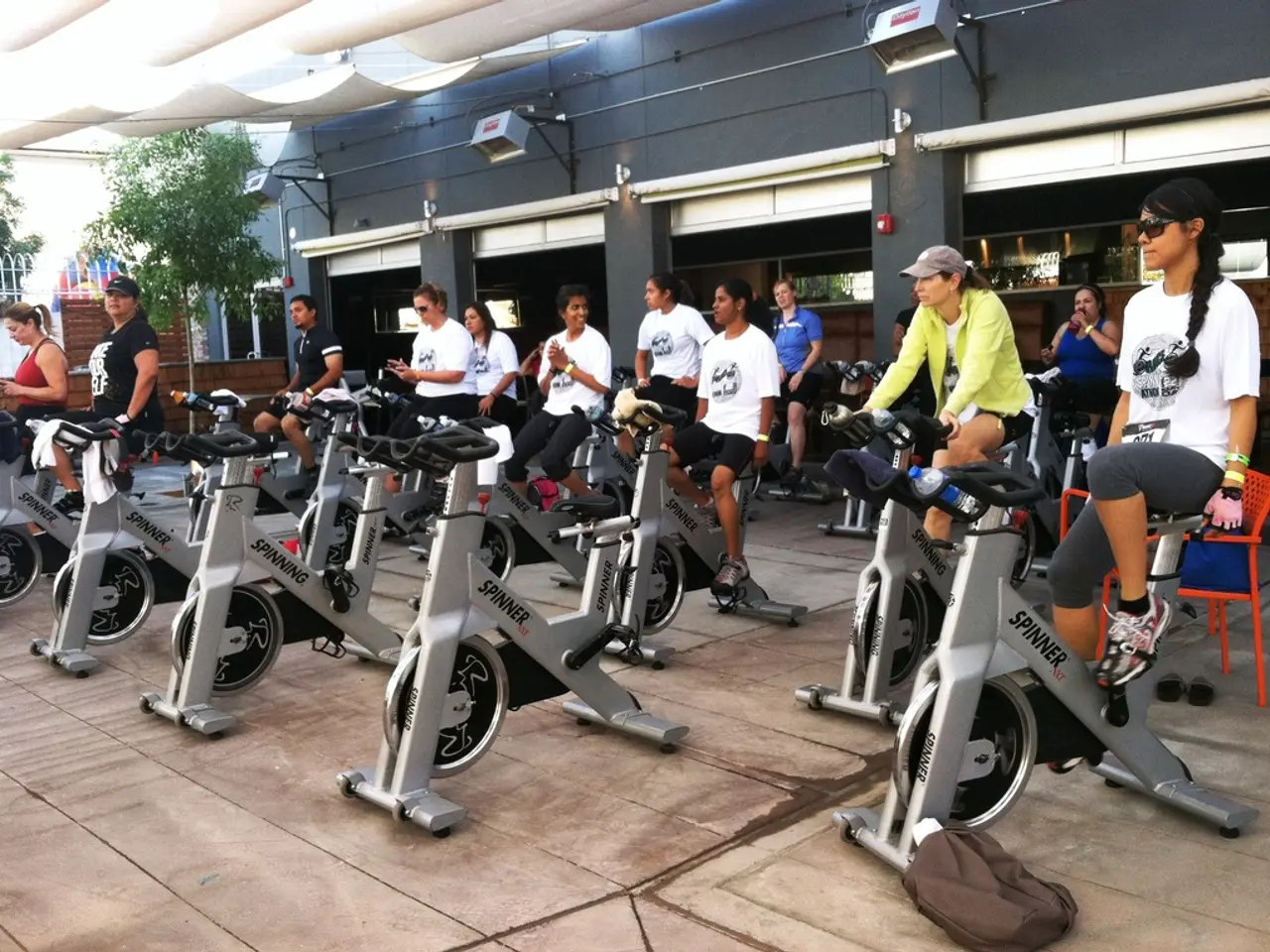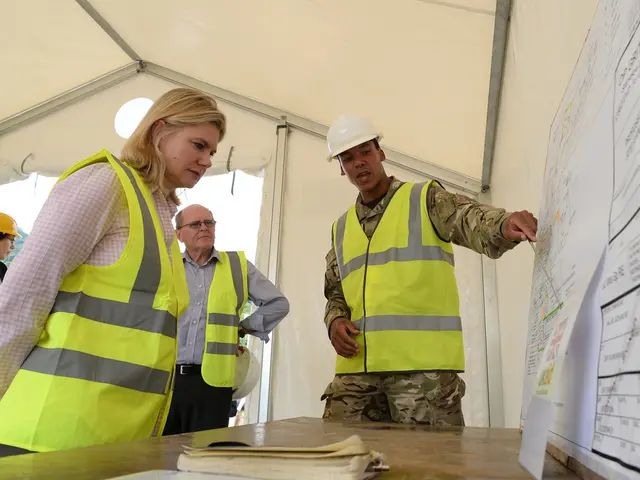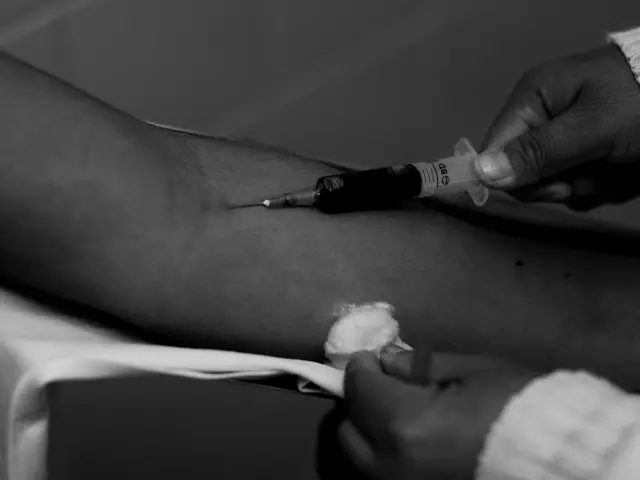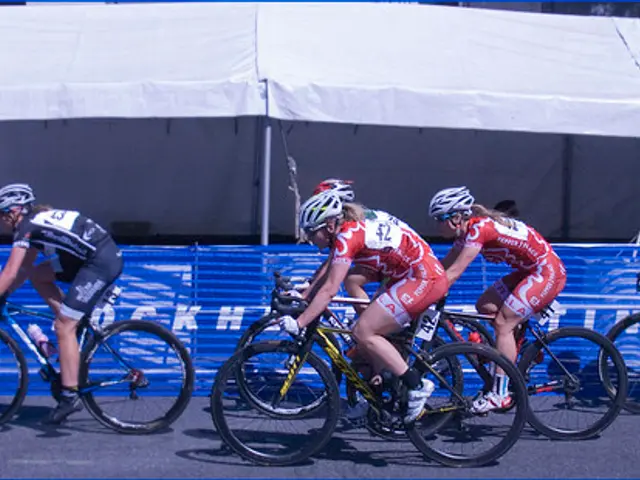Guideto Long Life: Health, Prosperity, and Vigorous Aging
In the realm of health and wellness, a growing body of evidence is highlighting the benefits of tailored exercise programs for those aged 50 and above. Programmes like Silver Sneakers are leading the charge, demonstrating significant improvements in muscle function and brain health.
The secret to this success lies in the integration of various exercise modalities, focusing on aerobic, resistance, and mind-body exercises, often combined with cognitive engagement.
Resistance training, such as weightlifting or bodyweight exercises, has been found to improve overall cognitive function, inhibitory control, memory, and executive functioning in older adults, both cognitively healthy and those with mild cognitive impairment or early dementia. Aerobic exercise, like brisk walking, primarily enhances memory and physical function. Mind-body exercises, such as Tai Chi or Baduanjin, have been shown to improve working memory and task-switching ability, benefiting executive function, especially for those with limited mobility.
Community-based programmes that merge aerobic and resistance training have been found to maximise physical, cognitive, and social benefits. For instance, a 20-minute brisk walk followed by 15 minutes of bodyweight exercises can provide a comprehensive workout that supports multiple cognitive domains.
Regular physical activity, even at moderate intensity once or multiple times per week, slows cognitive decline and supports independence and quality of life over time. Progressive overload in resistance training is important to stimulate muscle and brain adaptations.
Combining physical activity with cognitive challenges or therapies can further boost cognitive resilience. For example, physical activity paired with tasks that require planning, memory, or problem-solving may enhance benefits. However, studies outlining detailed combined protocols are still evolving.
Tailoring exercise programs to individual health, cognitive status, and mobility ensures safety and sustainability. Seated mind-body exercises are effective for those with physical constraints, promoting balance, executive function, and engagement without excessive strain.
The implications of these findings are far-reaching. Sustainable long-term adherence is crucial for maximising cognitive and physical benefits. Promoting personalised, enjoyable, and socially engaging exercise routines can reduce dementia risk, delay cognitive decline, and improve quality of life in older adults.
In the business world, companies catering to the 50-plus age group are seeing increased profitability as they develop products and services tailored to active ageing. Programmes like Activate Brain and Body offer targeted cognitive circuit workouts for those over 45, aiming to enhance overall well-being.
In conclusion, evidence supports combined and tailored exercise programs involving aerobic, resistance, and mind-body components with cognitive engagement, practiced regularly and progressively, to enhance both physical and mental well-being in older adults. This precision approach, adapted to individual needs and capacities, is key to optimising outcomes and maintaining independence with aging.
- Incorporating various exercise modalities, such as aerobic, resistance, and mind-body exercises, enhances cognitive function and brain health for adults aged 50 and above.
- Regular involvement in physical activities, especially programs like Silver Sneakers, offers significant improvements in muscle function and memory for older adults.
- Community-based programs combining aerobic and resistance training maximize physical, cognitive, and social benefits in older adults, as demonstrated by a 20-minute brisk walk followed by 15 minutes of bodyweight exercises.
- Progressive overload in resistance training is crucial for stimulating muscle and brain adaptations, leading to improved physical and cognitive performance.
- Combining physical activity with cognitive challenges or therapies further boosts cognitive resilience, particularly when tasks require planning, memory, or problem-solving.
- Tailoring exercise programs to individual health, cognitive status, and mobility ensures safety and sustainability, with seated mind-body exercises appropriate for those with physical constraints.
- This precision approach, which involves personalized and enjoyable routines, can reduce dementia risk, delay cognitive decline, and improve quality of life in older adults.
- Companies that cater to the 50-plus age group and develop targeted products and services for active aging, like Activate Brain and Body, see increased profitability by addressing the health and wellness needs of this growing demographic.








